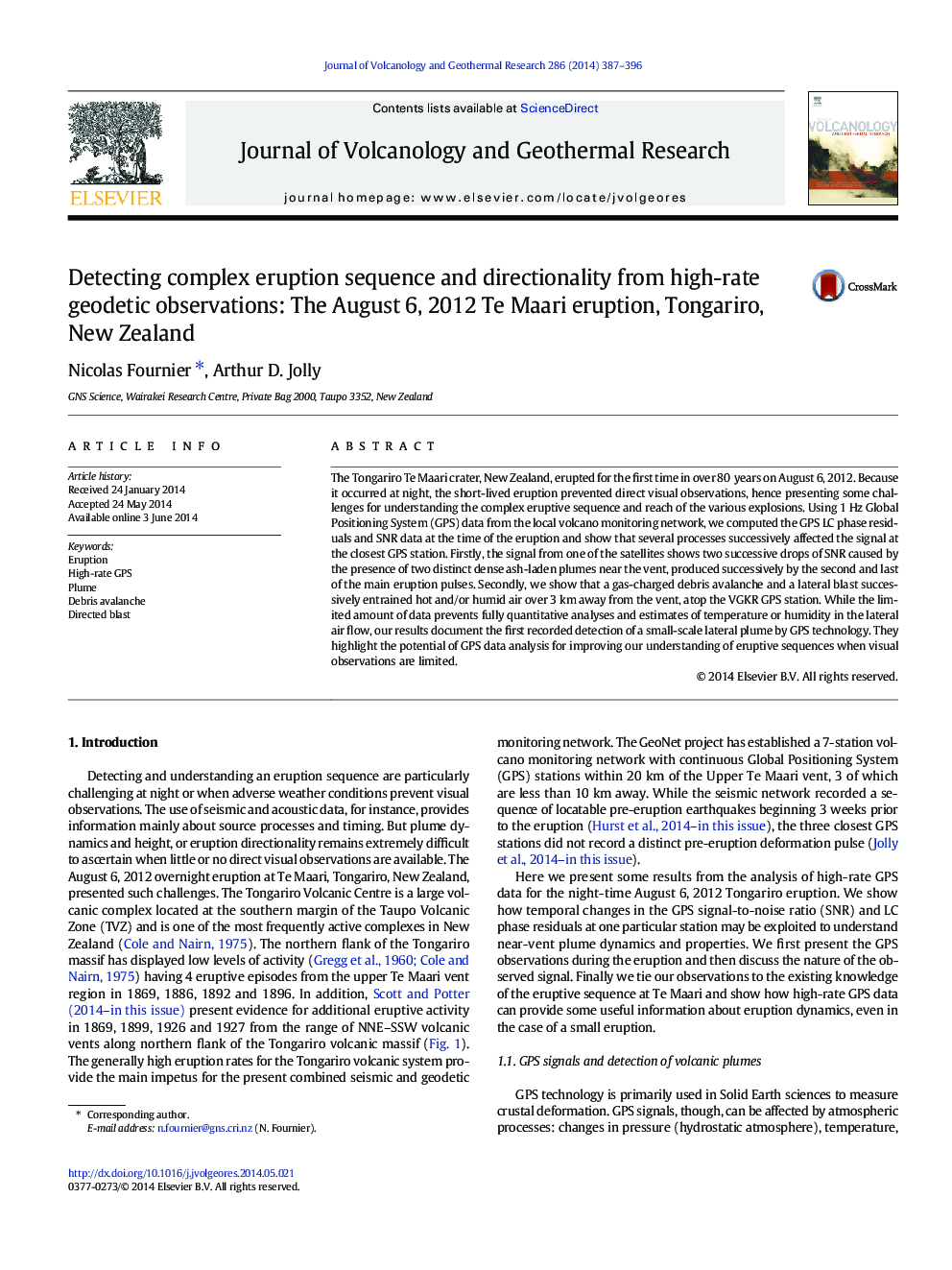| کد مقاله | کد نشریه | سال انتشار | مقاله انگلیسی | نسخه تمام متن |
|---|---|---|---|---|
| 6439696 | 1638336 | 2014 | 10 صفحه PDF | دانلود رایگان |

- We report the first detection of directed volcanic mass flows with GPS technology.
- The debris avalanche and NW directed blast both entrained gas/air laterally 3Â km away.
- LC phase residuals show changes in atmospheric conditions atop the VGKR GPS station.
- The analysis of GPS L2 SNR data shows two successive dense ash plumes near the vent.
- Most of the ash was expelled by a NW directed blast and the final vertical explosion.
The Tongariro Te Maari crater, New Zealand, erupted for the first time in over 80Â years on August 6, 2012. Because it occurred at night, the short-lived eruption prevented direct visual observations, hence presenting some challenges for understanding the complex eruptive sequence and reach of the various explosions. Using 1Â Hz Global Positioning System (GPS) data from the local volcano monitoring network, we computed the GPS LC phase residuals and SNR data at the time of the eruption and show that several processes successively affected the signal at the closest GPS station. Firstly, the signal from one of the satellites shows two successive drops of SNR caused by the presence of two distinct dense ash-laden plumes near the vent, produced successively by the second and last of the main eruption pulses. Secondly, we show that a gas-charged debris avalanche and a lateral blast successively entrained hot and/or humid air over 3Â km away from the vent, atop the VGKR GPS station. While the limited amount of data prevents fully quantitative analyses and estimates of temperature or humidity in the lateral air flow, our results document the first recorded detection of a small-scale lateral plume by GPS technology. They highlight the potential of GPS data analysis for improving our understanding of eruptive sequences when visual observations are limited.
Journal: Journal of Volcanology and Geothermal Research - Volume 286, 1 October 2014, Pages 387-396